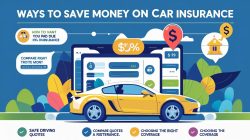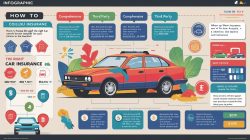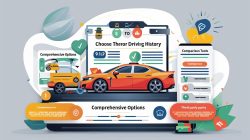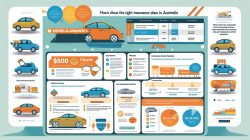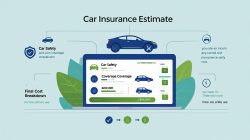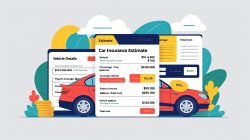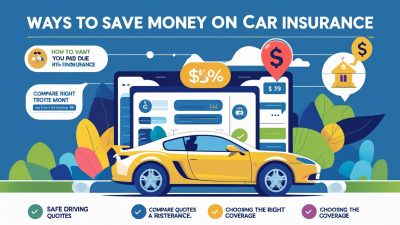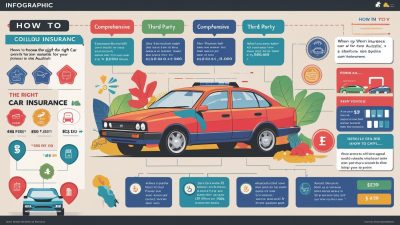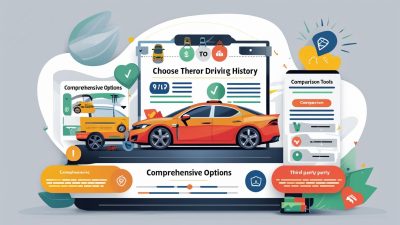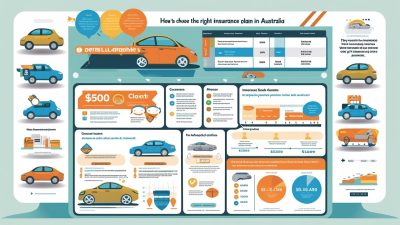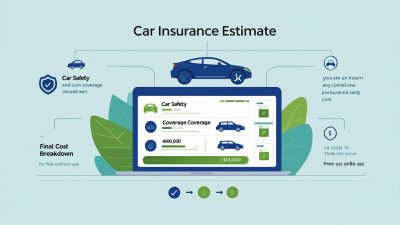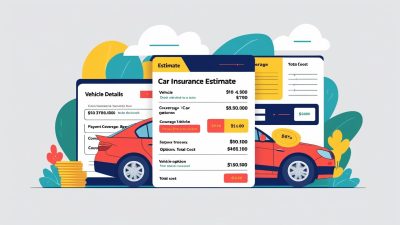How to Choose the Right Car Insurance for Your Vehicle in Australia
Bloggerbanyumas.com – How to Choose the Right Car Insurance for Your Vehicle in Australia When it comes to protecting your vehicle, choosing the right car insurance is crucial. In Australia, with an array of policies available, selecting the right car insurance for your vehicle requires careful consideration of various factors. Whether you’re a first-time car buyer or simply looking to switch providers, understanding your options and how they align with your needs will ensure you’re adequately covered in case of accidents, theft, or unforeseen events. The Australian car insurance market is competitive, and with the right guidance, you can make an informed decision that not only protects your car but also keeps your costs manageable.

Australia’s car insurance landscape is as diverse as its drivers, with each policy offering different levels of protection. From comprehensive coverage that shields your car from almost every possible incident to more affordable third-party options, knowing what each policy entails is the first step towards securing the right insurance. This article will guide you through the different types of car insurance, the factors influencing premiums, and how to assess which policy best suits your vehicle and driving needs in Australia.
Types of Car Insurance in Australia
1. Comprehensive Car Insurance
Comprehensive car insurance is the highest level of coverage available in Australia. It provides protection for your vehicle, whether it’s damaged by an accident, stolen, or affected by natural events such as hailstorms or floods. It also covers third-party property damage, making it a versatile choice for drivers who want the most extensive protection for their vehicle.
What Does Comprehensive Car Insurance Cover?
- Accidental Damage: Whether it’s a fender bender or a major collision, comprehensive insurance covers the damage to your vehicle, regardless of who is at fault.
- Theft and Vandalism: If your car is stolen or vandalized, your policy will cover the costs of repairs or a replacement vehicle.
- Natural Disasters: Comprehensive policies also protect your vehicle in the event of damage caused by natural disasters like storms, hail, and floods.
- Third-Party Property Damage: In the event you cause damage to another person’s vehicle or property, comprehensive car insurance will cover those costs.
Why Choose Comprehensive Car Insurance?
Comprehensive insurance is ideal for new car owners or individuals who want peace of mind. If your car is of high value, newly purchased, or if you live in an area prone to natural disasters, comprehensive car insurance offers all-around protection. While premiums tend to be higher, the extensive coverage justifies the cost for many drivers.
2. Third-Party Property Damage Insurance
Third-party property damage insurance is the most basic form of coverage and is typically more affordable than comprehensive car insurance. It covers damage you cause to other vehicles or property in an accident but does not provide coverage for your own vehicle.
What Does Third-Party Property Damage Insurance Cover?
- Third-Party Property Damage: This insurance covers the cost of repairing or replacing another person’s vehicle or property if you’re at fault in an accident.
- Legal Liability: It offers protection against legal claims for damages caused to others, reducing the financial burden in case of a lawsuit.
Why Choose Third-Party Property Damage Insurance?
For those with older cars, third-party property damage insurance may be sufficient. It is the most affordable form of coverage, and although it doesn’t cover your own vehicle, it ensures you’re financially protected from damage to other people’s property in case of an accident. If you drive an older vehicle or don’t mind taking on some risk, this policy could be the most cost-effective option for you.
3. Third-Party, Fire, and Theft Insurance
Third-party, fire, and theft insurance is a mid-tier option between basic third-party property damage insurance and comprehensive coverage. As the name suggests, this insurance provides coverage for third-party property damage as well as protection in case your vehicle is stolen or damaged by fire.
What Does Third-Party, Fire, and Theft Insurance Cover?
- Third-Party Property Damage: Similar to third-party property damage insurance, this policy covers the damage you cause to someone else’s vehicle or property.
- Fire Damage: If your vehicle is damaged by fire, this policy will cover the repair or replacement costs.
- Theft: If your vehicle is stolen, the insurance will help you recover the cost of the car or its replacement.
Why Choose Third-Party, Fire, and Theft Insurance?
Third-party, fire, and theft insurance offers a balanced solution for drivers who want additional protection beyond basic third-party coverage but do not want to pay for comprehensive insurance. It’s a good option for those who drive older cars or live in areas with a higher risk of vehicle theft or fire damage.
4. CTP (Compulsory Third-Party) Insurance
Compulsory Third-Party (CTP) insurance is mandatory for all vehicles registered in Australia. CTP covers the cost of injuries caused to others in an accident that you are responsible for. However, it does not cover vehicle damage or personal injuries to yourself or passengers.
What Does CTP Insurance Cover?
- Injury to Others: If you’re at fault in an accident, CTP insurance will cover the medical and rehabilitation costs for the injured parties.
- Legal Fees: CTP insurance can also cover legal fees associated with any compensation claims following an accident.
Why Choose CTP Insurance?
CTP insurance is legally required for all vehicles in Australia, so it is not optional. It ensures that you are financially covered for any injuries caused to others in the event of an accident, but it does not cover your own vehicle’s damages or your injuries. You must have CTP insurance to legally drive and register a vehicle in Australia.
5. Car Insurance Add-Ons
In addition to the core coverage provided by your car insurance policy, insurers often offer optional add-ons. These add-ons can enhance your policy, offering more tailored protection to meet your individual needs.
Common Car Insurance Add-Ons
- Roadside Assistance: This add-on offers services like towing, tire changes, jump-starts, and other emergency services if your car breaks down.
- Hire Car Coverage: This ensures you have a temporary car to use while yours is being repaired following an accident or breakdown.
- Windscreen Cover: This covers the cost of repairing or replacing a broken windscreen, a common problem in many areas.
- Excess Reduction: By paying a slightly higher premium, you can lower your excess, which is the amount you pay out of pocket when making a claim.
Why Choose Add-Ons?
Add-ons provide additional flexibility and peace of mind, especially if you rely heavily on your vehicle. For example, roadside assistance is beneficial for drivers who often travel long distances, while hire car coverage is invaluable if you need a car while your vehicle is in the shop. Add-ons can significantly enhance your policy by filling gaps in coverage.
Factors Influencing the Cost of Car Insurance in Australia
The cost of car insurance can vary significantly based on several factors. Understanding these variables can help you choose a policy that offers the best coverage while keeping your premiums affordable.
1. Vehicle Type and Value
The type and value of your vehicle are significant factors in determining your premium. Newer, more expensive vehicles generally attract higher premiums due to the higher replacement and repair costs. Conversely, older vehicles with lower values tend to result in lower premiums.
2. Driver’s Age and Experience
Insurance premiums for young and inexperienced drivers are generally higher. Younger drivers are considered higher risk, which leads to higher insurance costs. As you gain more experience and maintain a clean driving record, your premiums will likely decrease.
3. Location
Your location in Australia can also impact your car insurance premium. Areas with higher rates of car theft, accidents, and natural disasters like hailstorms or floods tend to have higher premiums. Insurers assess the risks associated with your area when calculating your premium.
4. No-Claim Bonus
If you have a history of not making claims, insurers will often reward you with a no-claim bonus. This bonus can result in a discount on your premium, which can add up significantly over time.
5. Excess
The excess is the amount you agree to pay when you make a claim. If you opt for a higher excess, your premiums will generally be lower. However, this means you will have to pay more out of pocket if you need to make a claim.
6. Policy Add-Ons
While add-ons increase your coverage, they also add to your premium. Choosing the right add-ons that align with your needs can increase your level of protection without dramatically increasing your premium.
How to Choose the Right Car Insurance for Your Vehicle
1. Assess Your Needs
Start by evaluating the value of your car, how often you drive, and your budget. For new or expensive vehicles, comprehensive insurance may be the best option to ensure complete protection. For older cars or those with lower value, third-party insurance or third-party, fire, and theft insurance may be more suitable.
2. Compare Quotes
Use online comparison tools to obtain quotes from various insurers. Comparing quotes can help you find the best value for your money, ensuring that you’re getting the coverage you need at an affordable price.
3. Review Policy Details
Don’t just look at the premium—read through the policy details carefully. Understand what is covered and what isn’t, as well as the terms and conditions. Make sure that the policy includes the coverage options you need, whether it’s third-party property damage, fire, theft, or other add-ons.
4. Consider Customer Reviews
Look at customer reviews and ratings to gauge the insurer’s reliability and the quality of their customer service. It’s essential to choose an insurer with a good reputation for handling claims and providing excellent customer support.
5. Evaluate Discounts and Bonuses
Many insurers offer discounts for safe driving, bundling policies, or maintaining a no-claim bonus. Make sure to ask about these options to lower your premium.
Conclusion
Choosing the right car insurance for your vehicle in Australia involves understanding the various types of coverage available and determining which one aligns with your needs and budget. While comprehensive car insurance offers extensive protection, third-party insurance options can provide a more affordable alternative for those with older or less valuable cars. By comparing quotes, considering add-ons, and reviewing policy details, you can make an informed decision that ensures your car is adequately covered while keeping your costs manageable.

